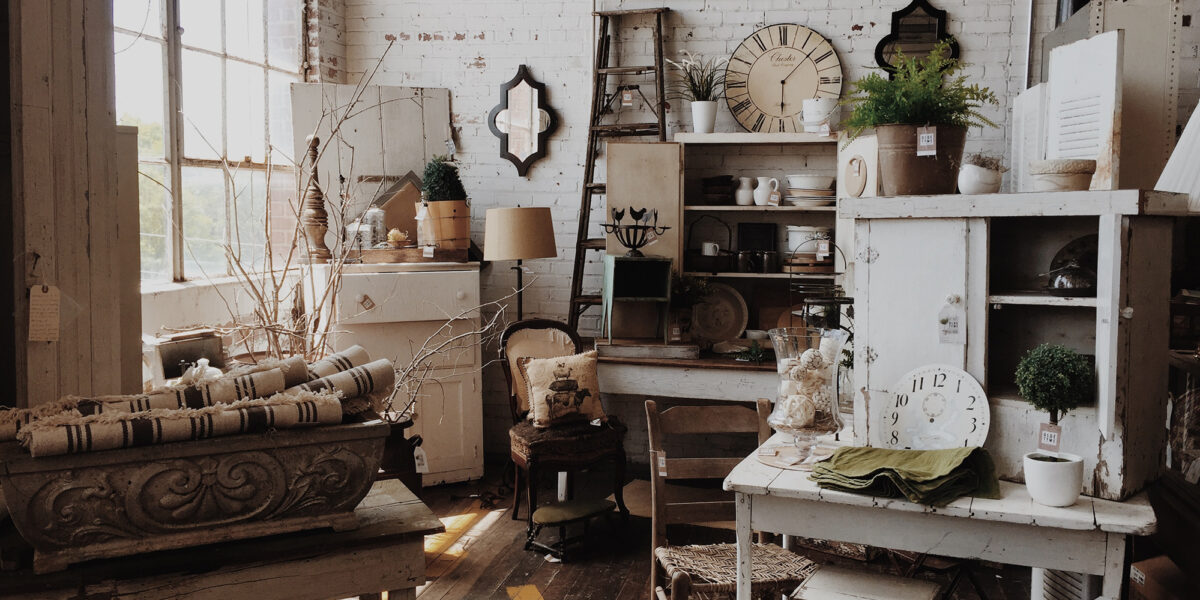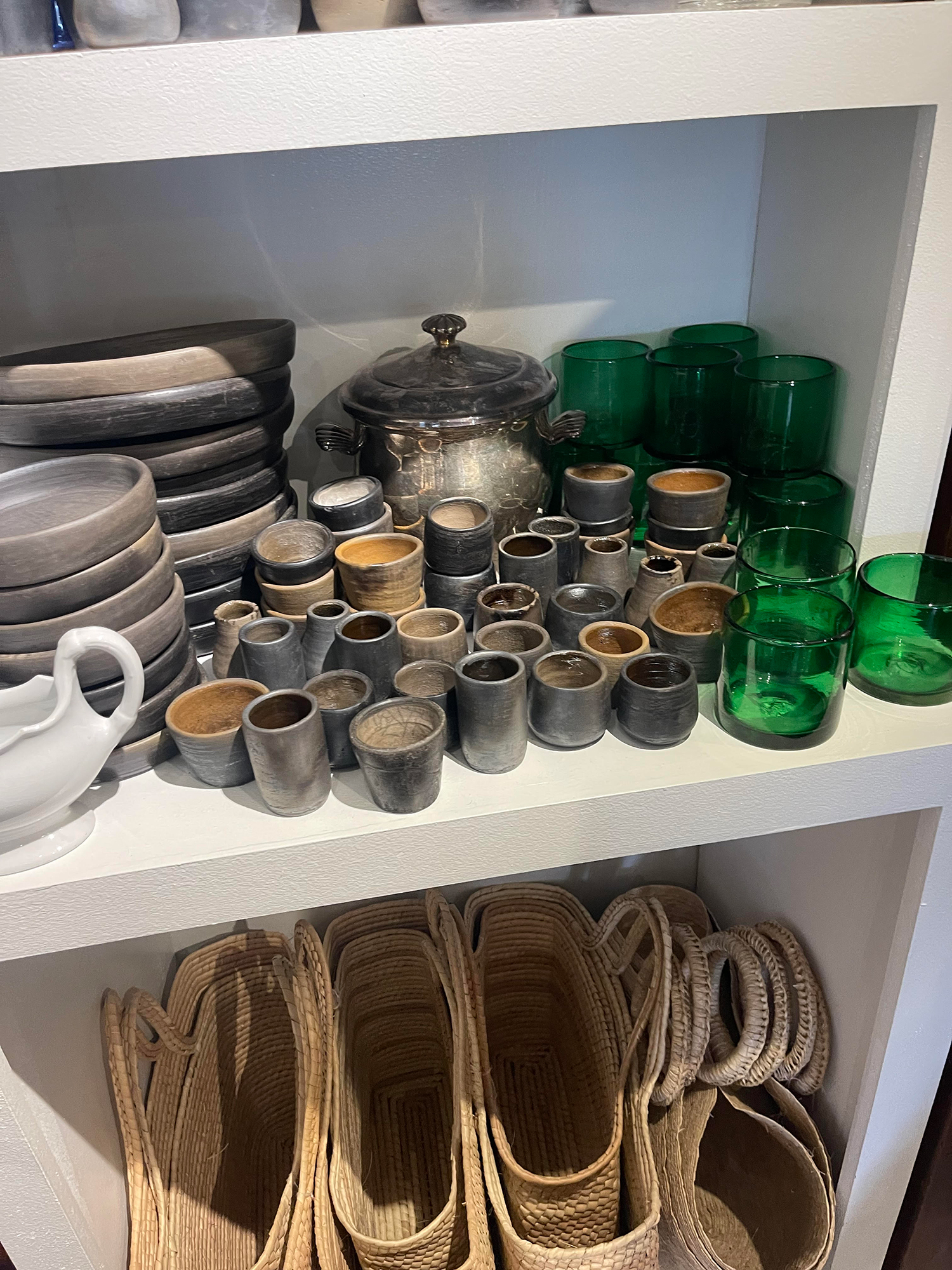
6 Things You Need to Know Before You Go Antiques Shopping, According to Interior Designers
Rule number one: Toss your agenda!

Your home is a reflection of your personal style and experiences, and it should be filled with everything you love. While there are practical pieces, of course, special finds are the ultimate conversation-starters. For many interior designers, antiquing is essential to rounding out the look of a space—and there are plenty of recommendations first-timers should know before heading out to a shop, flea market, or other antiques hub.
Eager to go hunting for antiques? Take note of two experts’ advice on shopping, negotiating, and bringing home a meaningful item.
1. Go in Without an Agenda

Ashley Clark
While you might have a particular piece in mind that you “need” for your home, the best way to approach antiquing is to simply have fun with it and go in without expectations. “You never know what you will find and I think it is best to let the treasures find you!” says Ashley Clark of sKout Interior Design.
And while it’s possible to shop for antiques online at sites like 1stDibs.com, you should always plan a day to visit these spots in person. “Sometimes I will try to call ahead to inquire about their current inventory, but I usually just pop in to see what they have,” says Melissa Hanle of Hanle Interiors. “Nothing beats visiting in person and, most often, I find treasures I didn’t realize I needed!”
2. Focus on the Finish

Ashley Clark
There’s a certain test you want to run with each piece you’re interested in, says Hanle. Here’s how her thought process works: “The first thing I look at when shopping for an antique piece of furniture is the finish,” she says. “Antiques with their original finish are more valuable than refinished pieces. But even if it’s been refinished at some point, it can still have a beautiful patina due to the age of the wood.”
Hanle adds that this rule applies to painted furniture as well, and you want to seek out pieces with original paint. Once it passes the finish-related phase of the test, you should move on to construction and design. It’s important to assess whether it’s accurate to the period, and Hanle also recommends looking closely for any modifications or repairs. Why? Any of these changes will ultimately lower its value.
3. Always Ask Questions
It’s more than understandable that antiquing can feel overwhelming, especially if you’ve never done it before. However, both Clark and Hanle encourage shoppers to ask questions and learn more about the antiques they’re considering.
“I always love learning the story about our finds: where it came from, the history, who it belonged to, etc.” Clark says. “Lots of dealers and vendors have information, so always ask.”
Speaking with the vendor about what you’re hoping to find may also provide you with a larger inventory. “I always ask if I don’t find what I’m looking for,” Hanle says. “Most dealers will have pieces stored in a warehouse or will have pictures of the pieces arriving in their next container shipment from Europe.”
4. Prioritize Original Antiques

Ashley Clark
Value is always driven by what’s original and authentic, but Hanle adds that there are times when an antique needs to be altered in some way.
“To me, an original antique is worth going a bit higher on price, but I understand not all my clients feel this way,” Hanle says. “Often, I will see a piece that is beautifully constructed but has a less than desirable finish. I’m certainly not opposed to having it refinished if it’s otherwise perfect for a particular space I’m furnishing.”
5. If You Love It, Buy It!
One of the best pieces of advice? Go with your gut and bring home the items you absolutely love.
“I was once told that, ‘You only regret the purchases you do not make,’ and it is 100% true!” says Clark. “I lose sleep over things that I did not buy because I did not have the perfect spot or maybe wasn’t the best price. If you love it… buy it! Chances are you will not find it ever again and it will forever torture you. You will always find a place for something you love.”
6. Be Thoughtful About Negotiating

Ashley Clark
You don’t need to be an expert negotiator, especially as an antiquing newbie. In fact, our experts don’t typically go back and forth on pricing. “I am honestly not the best negotiator, and I know how many hours and how much work it is to find, schlep, and show antiques at shows and fleas,” says Clark. “I do always ask for the best price and if they are willing to negotiate.”
With these skills in your antiquing toolbox, we hope you’ll feel more confident about purchasing your first flea market find. But fair warning: The rush of getting that perfect piece is just the beginning. “It can be overwhelming at first, but once you make that first purchase, you kind of get addicted,” Clark says.
